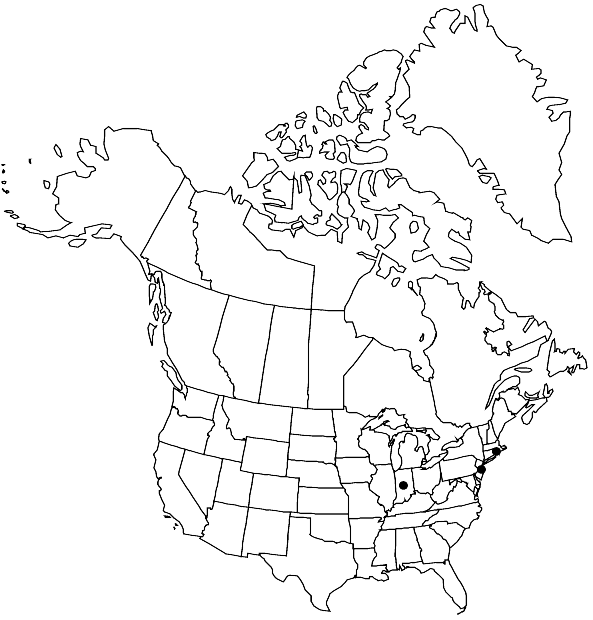Fissidens closteri subsp. closteri
Plants to 0.65 × 0.4 mm. Stem exceedingly short (transverse section not observed); axillary hyaline nodules absent; central strand (?). Leaves in 2–3 pairs, ovate to ovate-lanceolate, acute, to 0.58 × 0.14 mm; dorsal lamina narrowed proximally, ending well above insertion in larger leaves, absent or nearly so in proximal leaves; ventral lamina narrowed in larger leaves, absent or nearly so in proximal leaves; vaginant laminae ± 2/3 leaf length, unequal, minor laminanarrowed, ending on costa; margin ± entire; costa percurrent to ending as many as 3 cells before apex, reduced; laminal cells 1-stratose, distinct, smooth, plane, firm-walled, quadrate to oblong, 9–25 × 9–14 µm, marginal cells smaller, oblong to rhombic in proximal portions of vaginant laminae. Sexual condition rhizautoicous; perigonia gemmiform, proximal to perichaetial stems. Sporophytes 1 per perichaetium. Seta 1–2.5 mm. Capsule theca exserted, erect, radially symmetric, 0.18–0.37 mm; peristome scariosus-type; operculum 0.18–0.28 mm. Calyptra mitrate, smooth, 0.12–0.28 mm. Spores 7–11 µm.
Habitat: Rocks along streams in woods, probably subject to flooding
Distribution

Ind., N.J., R.I.
Discussion
Subspecies closteri, originally collected near Closter, New Jersey, is the smallest Fissidens in North America: plants are practically stemless. It is probably more abundant than its distribution reflects but goes unnoticed because of its tiny size. It is distinguished by its size, a more or less entire leaf margin, small laminal cells, minor lamina narrowed distally to the costa, which is greatly reduced or absent from the proximal leaves, and mitrate calyptra. Subspecies kiusiuensis (Sakurai) Z. Iwatsuki in China and Japan differs by its crenulate-serrulate leaf margin and prorate calyptral cells.
Selected References
None.